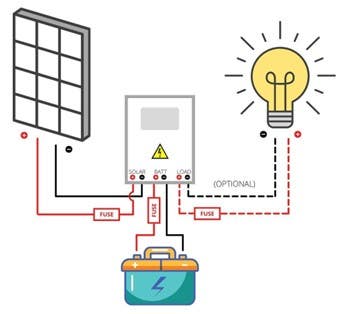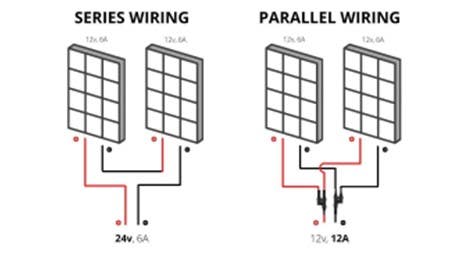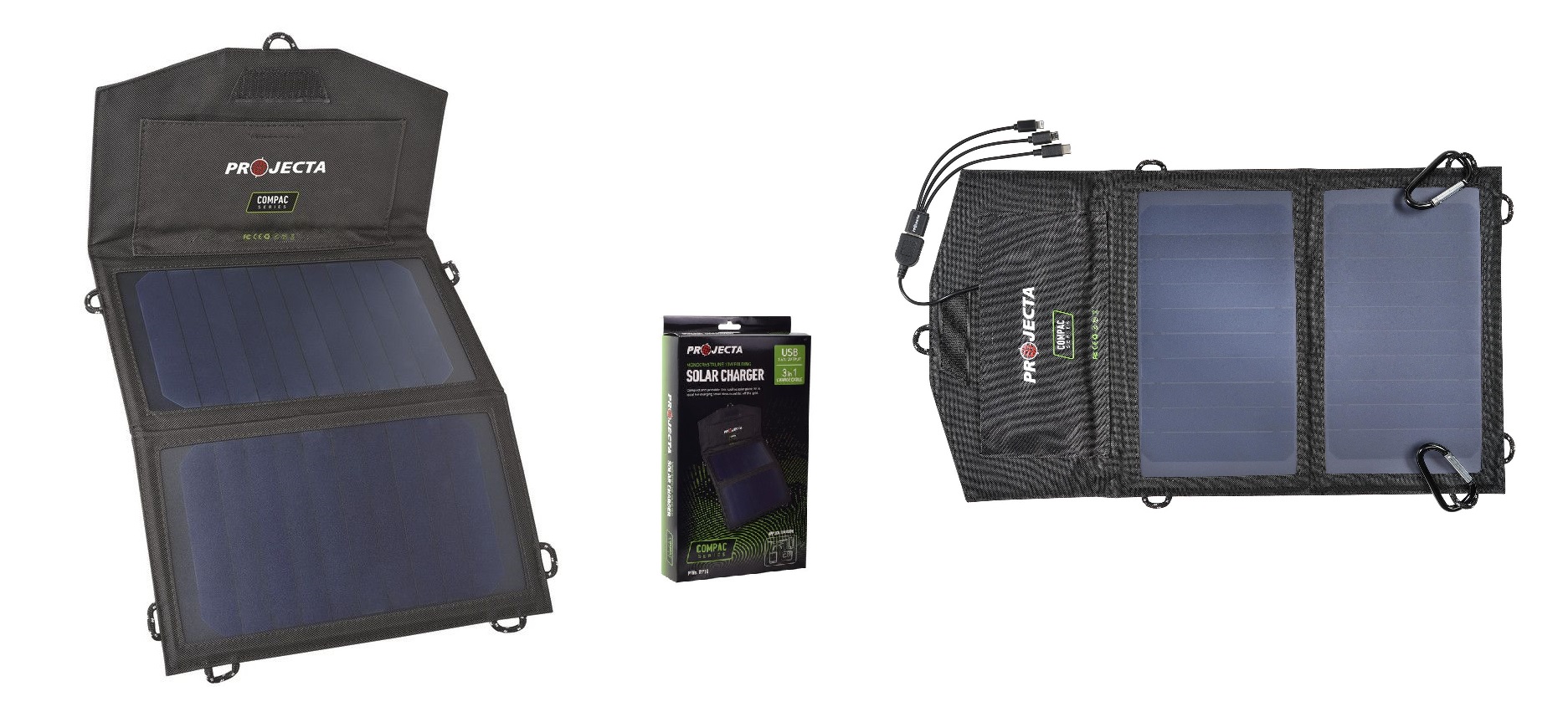The addition of solar panels to a boat or recreational vehicle really kicks the off-grid capabilities up a notch or two! Gone are the days of needing to fire up a noisy generator to keep the batteries charged and the fridge cold when off the grid. With improvements in solar panel technology and manufacturing, the efficiency of the panels has gone up while the prices have come down!
How Do Solar Panels Work?
The simplest explanation is that light from the sun hits the solar panel and gets converted into electrical energy. This energy then gets sent down through the wiring to a controller before either being used or stored in a battery.
It’s not necessary to know what goes on inside a solar panel to use one, but if you would like to know the technical details, keep reading. Otherwise you can skip to the next section.
Each solar panel is made up of individual cells linked together, and the number of cells determines the voltage output of the solar panel. These cells are usually made up of two thin layers of silicon sandwiched together. When photons (light particles) from the sun hit the cell, they knock electrons (negative particles) out of the atoms within the silicone, thus making the atom positively charged and generating a flow of electricity. Metal conductive plates capture these electrons and transfer the current to the wires used to connect the panel up to a solar charge controller.
Type of Solar Panels
There are two main types of solar panels, each with their own benefits and disadvantages in certain situations - these are known as polycrystalline and monocrystalline solar panels.
Polycrystalline or ‘poly’ panels have been developed as the cost-effective option to solar power, with their cells being made up of fragments of silicon crystals fused together. This makes the manufacturing process much simpler but does come with the downside of lowered efficiency. Polycrystalline solar panels can be distinguished by their blueish colour and the sharp corners of the cells.
When space is at a premium and maximum efficiency is a must, monocrystalline or ‘mono’ solar panels are the go-to. Although these panels have been around for longer, the cells being made from a single silicon crystal means they are far more efficient. As the manufacturing process is more complex, mono panels cost more than poly panels of the same wattage. Monocrystalline solar panels have cells that are black in colour with rounded or ‘trimmed’ corners.
Physical Solar Panel Variations
Along with the two types of technology used in a solar panel construction, there are also different physical types of panels, each designed for use in specific situations. The solar panels all work the same, but the method and location of installation will determine which is best for your needs.
The solar panel most people are familiar with is the standard glass 'rigid’ panel. These are large panels with an aluminium frame and a tempered glass panel protecting the cells. Rigid panels are great for large flat areas and are installed using simple L or corner brackets (this may require screws into the mounting surface). These panels are usually the most durable and often the most efficient - the way they are mounted allows airflow behind the panel which keeps it cooler and closer to its optimal operating temperature.
In recent years, the introduction of flexible solar panels has enabled solar power to be installed in a greater variety of locations. The cells of flexible solar panels are extremely thin which allow the panel to bend. They are not as durable as rigid panels but they’re particularly useful when fitting a panel onto a curved surface or looking for a low-profile finish. Using a high-quality adhesive, flexible panels can be stuck to any flat or slightly curved surface. This Renogy installation video shows you how: Renogy Flexible Solar Panel Installation Video
The final physical type of solar panels are the portable versions. These are great for adding extra power into your system when it’s needed. They are small and compact, easy to cary anywhere. Another benefit of portable panels is that they are able to be positioned to face directly at the sun so they generate the maximime power.
How Do I Wire My Solar Panels?
Every solar power system is essentially wired the same way: The solar regulator is wired to the battery and then the solar panel is wired to the solar regulator. Fuses are often required in panel installations on the positive wires between each of these components to protect the charge regulator and battery from excessive current. The below diagram shows a basic solar setup using one panel and battery:


Most solar regulators will also have load output for direct connection to a 12v component. A dedicated fuse block connected directly to the battery is usually used for setups with several electrical components.
For systems with multiple solar panels and batteries, the connections between each component are essentially the same - it’s simply a matter of ‘grouping’ the panels and batteries together and then wiring to each component in the same manner. Firstly, the way the panels and batteries are connected together drastically changes their output.
Wiring solar panels together in series will produce double the voltage but will keep the same current (amps). Similarly, two batteries connected together in series will result in double the voltage and the same current. For parallel wiring, the voltage remains the same but the current (Amps) is doubled:


For a series connection, the negative of the first panel is connected to the positive of the second panel, connecting them in a line one after the other. For a parallel connection, the two positive wires connect, as do the negative wires, making each panel its own.
For solar panels permanently mounted on the top of a camper or boat, a cable entry gland is used to run the wires through to the interior. This provides a covered junction which when sealed properly creates a waterproof entry point for the solar wires. For a high-end, low-profile finish with no sealant required we recommend the Scanstrut solar entry gland
Why Do I Need a Solar Charge Regulator?
You must never connect a solar panel directly to a battery. It is easy to fry your batteries from overcharging. The regulator accepts the higher voltage from the panel and then feeds the battery the correct voltage. Most solar regulators have settings to suit different battery types as Lead acid, AGM and Lithium batteries all need different charging profiles. There are two main types of solar controllers, PWM and MPPT:
- PWM (Pulse Width Modulation) controllers are physically smaller and lower in cost. They control the battery voltage by regulating the charging output.
- MPPT (Maximum Power Point Tracking) units extract the maximum available power from the panels and convert it efficiently to the exact voltage your battery requires.
For more information about our range of solar products for boats and RVs, phone us on 0800 102041, email us or Livechat with one of our staff via the website. Better still, visit a store for personalised advice about your solar needs.
Do you have any questions?
Please, contact our friendly team on 0800 102041 or email: website@burnsco.co.nz














